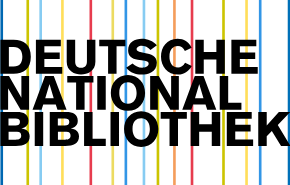FOSTERING NON-LINGUISTIC LANGUAGE LEARNERS` CRITICAL THINKING SKILLS VIA NATIONAL UZBEK FAIRY TALES IN READING CLASSES
DOI:
https://doi.org/10.55640/Keywords:
Critical thinking skills, Narrative texts (national fairy tales), non-linguistic language learners, Learner-oriented approach, reading classAbstract
This research aimed to assess the effectiveness of reading short narratives in enhancing the Critical Thinking (CT) skills of English as a Foreign Language (EFL) learners. This focus stems from the widespread presence of narratives in various aspects of human life and the essential role that CT plays in guiding students toward success in both academic and non-academic settings. To achieve this, the study involved 59 undergraduate EFL students majoring in English translation. Ultimately, 54 participants were selected, with 27 individuals assigned to each of the two groups: the narrative group (which engaged with the national fairy tale “Zumrad and Kimmat”) and the control group that did not use narratives. This selection considered the participants' language proficiency and CT skills to ensure group homogeneity.
References
1.Ahmadian, M., & Pashangzadeh, A. (2013). A Study of the Effect of Using Narratives on Iranian EFL Learners’ Reading Comprehension Ability.
2.Facione, P. A. (2013). Critical Thinking: What It is and Why it Counts. Insight Assessment, 1-28.
3.Ferrett, S. K. (1997). Peak Performance: Success in College and Beyond (2nd ed.). New York: McGraw-Hill.
4.Fludernik, M. (2009). An introduction to narratology. (P. Häusler-Greenfield, & M. Fludernik, Trans.) Routledge. Ghasemi, P., & Hajizadeh, R. (2011). Teaching L2 Reading Comprehension through Short Story. International Proceedings of Economics Development & Research, 26, 69-
5.Green, M. C., & Brock, T. C. (2000). The Role of Transportation in the Persuasiveness of Public Narratives. Journal of Personality and Social Psychology, 79(5), 701-721. http://dx.doi.org/10.1037/0022-3514.79.5.701
6.Green, M. C., & Brock, T. C. (2002). In the mind’s eye: Transportation-imagery model of narrative persuasion. In M. C. Green, J. J. Strange, & T. C. Brock (Eds.), Narrative Impact: Social and Cognitive Foundations (pp. 315-341). Mahwah, New Jersey: LAWRENCE ERLBAUM ASSOCIATES.
7.Grellet, F. (1981). Developing Reading Skills. Cambridge: Cambridge University Press.
8.Halpern, D. (2003). Thought and knowledge: An Introduction to Critical Thinking (4 ed.). Mahwah, New Jersey: Lawrence Erlbaum Associates.
9.Hardy, B. (1978). Narrative as a primary act of mind. In M. Meek, A. Warlow, & G. Barton (Eds.), The Cool Web: The Pattern of Children’s Reading. New York: Atheneum.
10.Harrison, C. (2004). Understanding Reading Development. London: SAGE Publications.
11.Hawkins, K. T. (2012). Thinking and Reading Among College Undergraduates: An Examination of the Relationship between Critical Thinking Skills and Voluntary Reading. (Unpublished doctoral dissertation). University of Tennessee, Knoxville,USA.
12.Iakovos, T. (2011). Critical and Creative Thinking in the English Language Classroom. International Journal of Humanities and Social Science, 1(8), 82-86. Jose, J. (2013). Unconventional Materials for Promoting Autonomous Learning Promoting Autonomous Learning. ELT Voices – India, 3(6), 96-113.
Downloads
Published
Issue
Section
License

This work is licensed under a Creative Commons Attribution 4.0 International License.
Authors retain the copyright of their manuscripts, and all Open Access articles are disseminated under the terms of the Creative Commons Attribution License 4.0 (CC-BY), which licenses unrestricted use, distribution, and reproduction in any medium, provided that the original work is appropriately cited. The use of general descriptive names, trade names, trademarks, and so forth in this publication, even if not specifically identified, does not imply that these names are not protected by the relevant laws and regulations.







